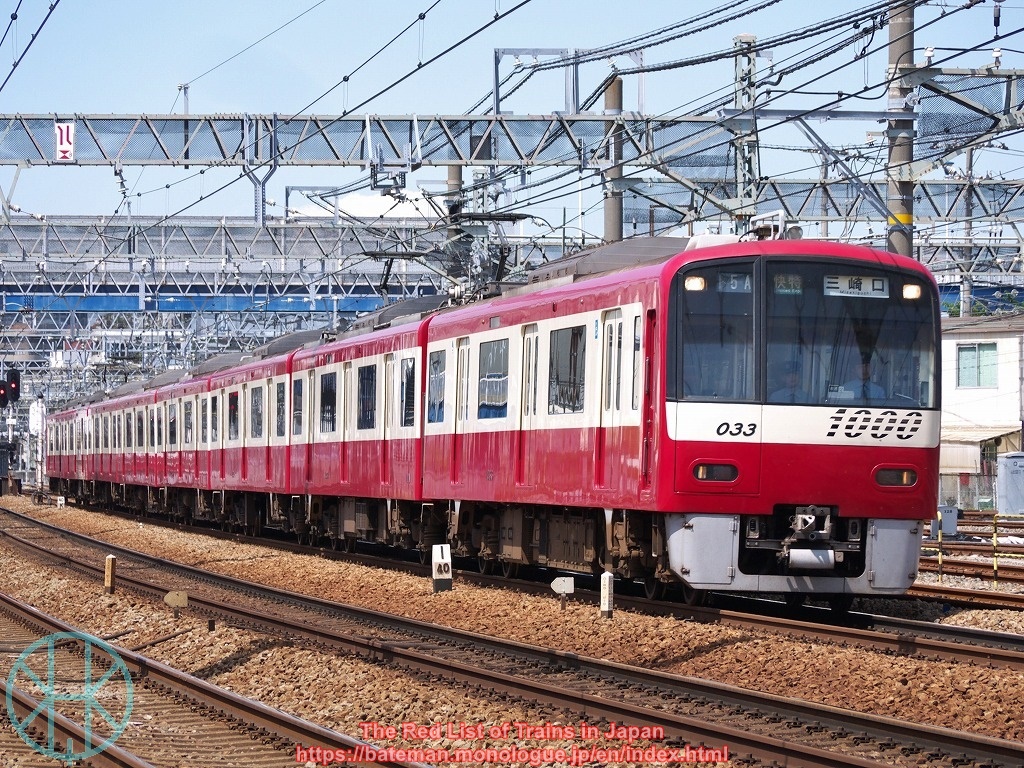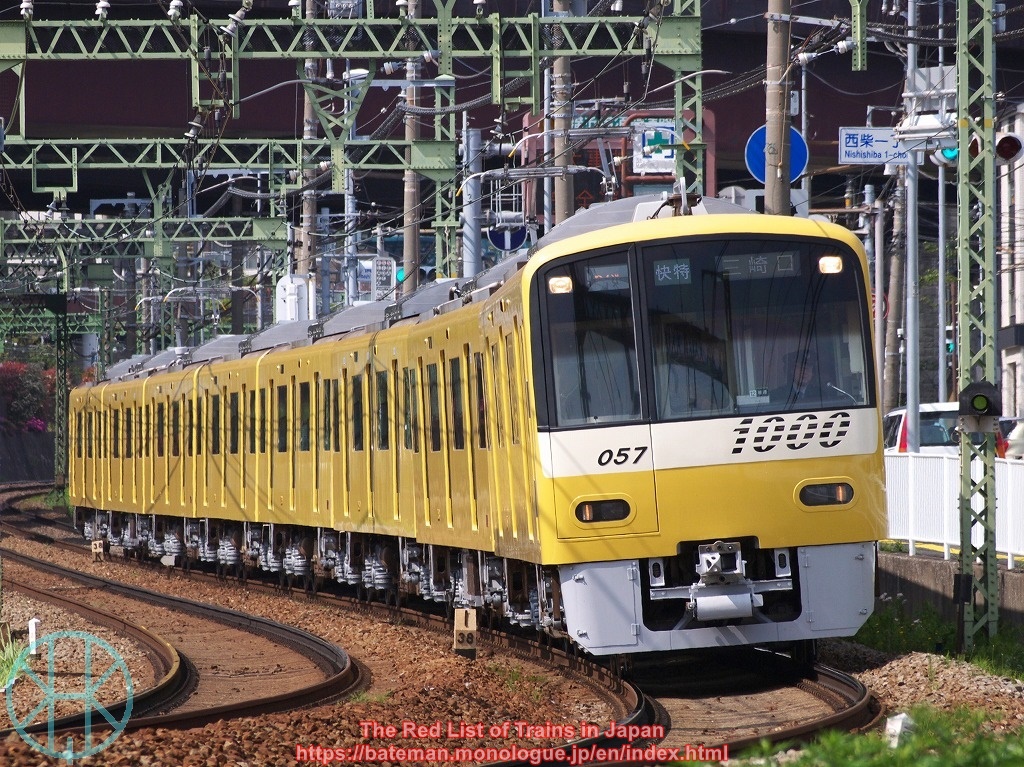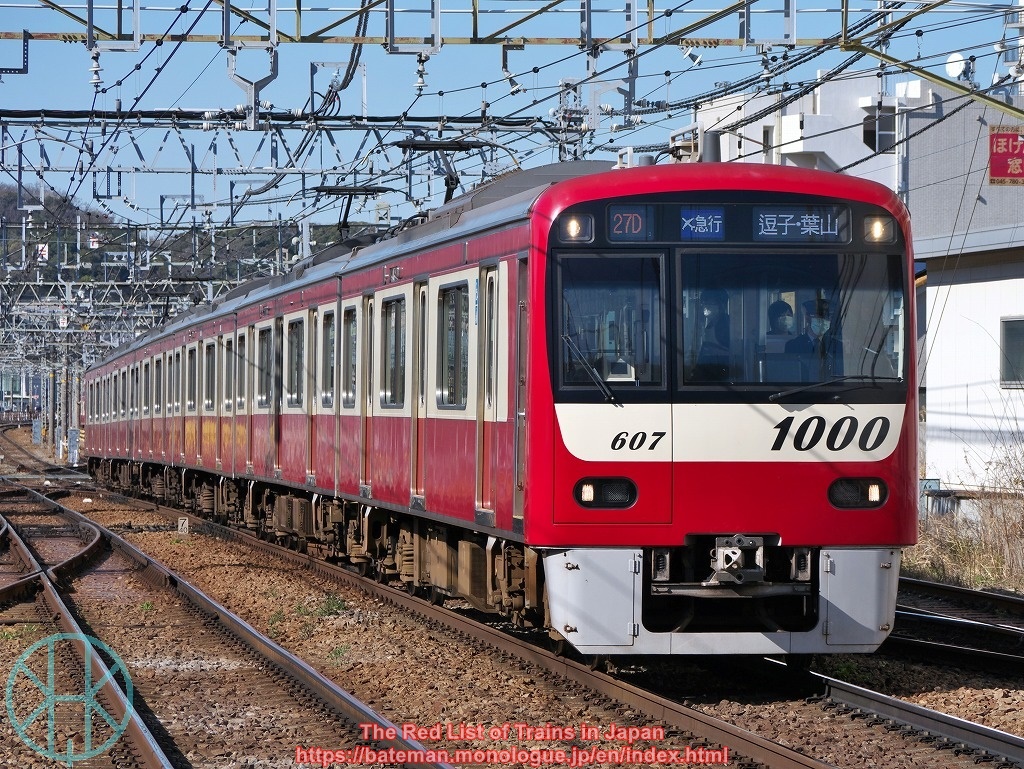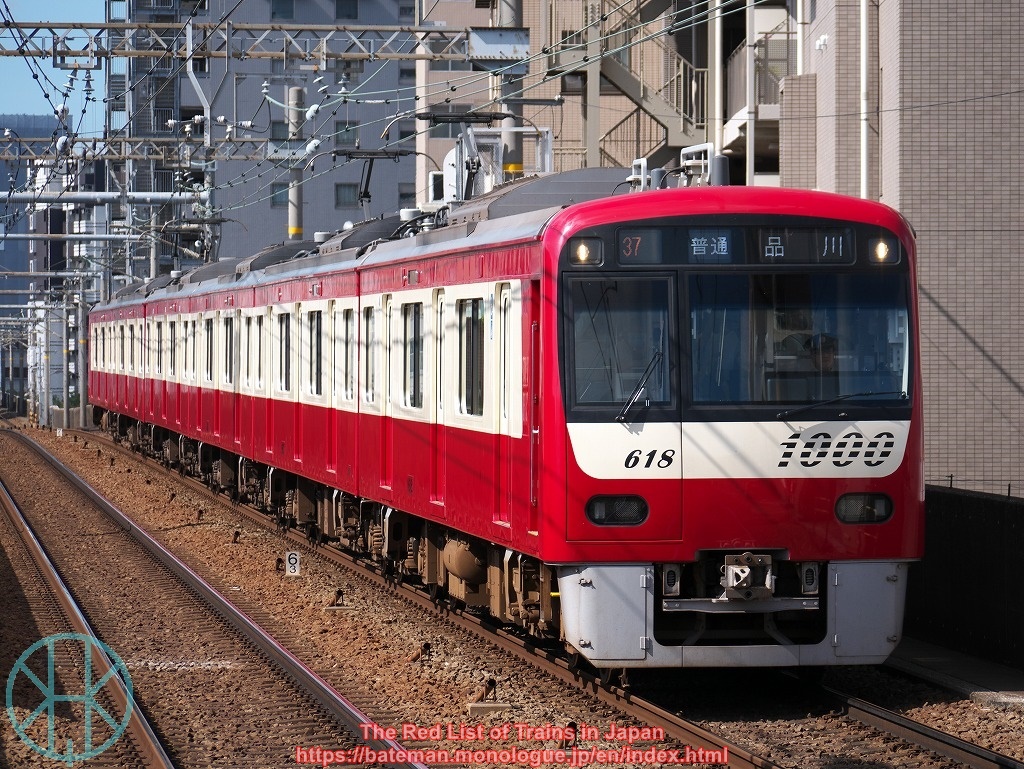Keikyu 1000 series (Ⅱ)

Data (as of 7 Jun 2025)
| Status: | Least Concern |
| Constructed in: | 2002- |
| Number built: | 506 |
| Registered: | 498 |
History
The 1000 series (Ⅱ), hereinafter referred to as the N1000 series, is the most numerous train type of Keikyu, whose number accounts for more than 60% of all carriages that belong to Keikyu. There are so many groups, and this article classify them into four: those with aluminium bodies, stainless steel bodies, 1800 subseries and 1890 subseries Le Ciel. All units have three sets of doors per carriage, and can run the underground, but not all of them are used for through-services towards Toei Asakusa, Keisei and Hokuso Lines.
The first group (aluminium-body) was built in 2002-06. There are eight-carriage units and four-car units. They are based on 2100 series, and those introduced by 2003 had Siemens's inverters that produce a melody when departing. However, the traction of those units were replaced with domestic ones by 2021, and thus they no longer sing.
The second group (stainless-steel-body) have been constructed since 2007, and each unit is formed of eight, six or four coaches. They are the first Keikyu trains made of stainless-steel bodies, but they look so cheap that they are unpopular among enthusiasts and even daily users. Thus, the company decided in 2016 to partly cover them with vinyl materials, to make them look better. From 2018, the company has been taking even more radical approach: painting the stainless-steel bodies that have high resistance to rusting.
The 1800 subseries is based on the second group, and they consist of four coaches. Unlike the previous versions, they have gangways in the middle of the front ends, allowing them to form eight coaches and run the underground. This is because the Japanese regulations require underground trains to have evacuation routes in case of emergency so that trains coupled with two or more units but without gangway are not allowed. However, the 1800 subseries have not been successful in such a flexible operation, and only three units were made in 2016.
Finally, the 1890 subseries is based on 1800 subseries, but the 1890s have convertible seating (transverse to longitudinal and vice versa). Each four-car unit has two toilets, apparently too much. According to the company, they can be used for rail tours, which has been described by railway magazines as questionable. The 1890 series is officially called Le Ciel, which means the sky in French.
Current Operations & Future Prospects
The N1000 series are used on the entire Keikyu network (but rarely on Daishi Line), and eight-car units are used on Toei Asakusa, Keisei and Hokuso Lines as well. Some of those with stainless-steel bodies run as Access Express on Narita Sky Access Line, which connects Haneda and Narita Airports. However, the 1800 and 1890 subseries are not used on the through-services. The 1890 subsries are also used for Morning Wing 3 (Miurakaigan - Shinagawa) on weekdays.
The N1000 series trains have already replaced 700 series (in service: 1967-2005), 1000 series (Ⅰ), 800 series and 2000 series. Keikyu plans to introduce even more N1000 series in the coming years, to replace 1500 series.
Photos

The first group (aluminium-body) looks like 600 series.

Since 2014, one of the first group has been painted yellow and called "KEIKYU YELLOW HAPPY TRAIN".

The second group (stainless-steel body) can be classified further to several categories. Those introduced in 2007-15 are not painted, and they are arguably the least popular one among enthusiasts.

Those introduced in 2016-17 are partly covered by vinyl materials so that they look similar to the first group.

The 1800 subseries is going to be the smallest group among all N1000 series.

Those built after 2018 are fully painted. Fully-painted stainless-steel train is not common in Japan.

When three units were delivered from the manufacturer in 2018, they were not completely painted as this photo shows due to "certain circumstances". Keikyu painted them red before mainline testing began.

The 1890 subseries was introduced in 2021-22.

Trains introduced after 2023 look slightly different, as if a mixture of ordinary "fully-painted" group and Le Ciel.
(Updated: 7 Jun 2025)
